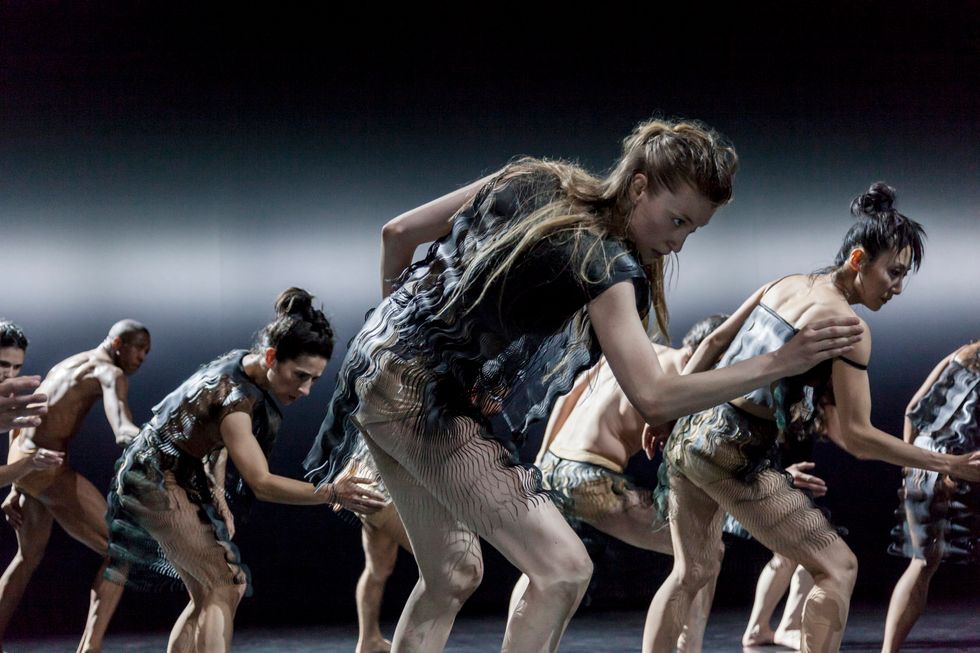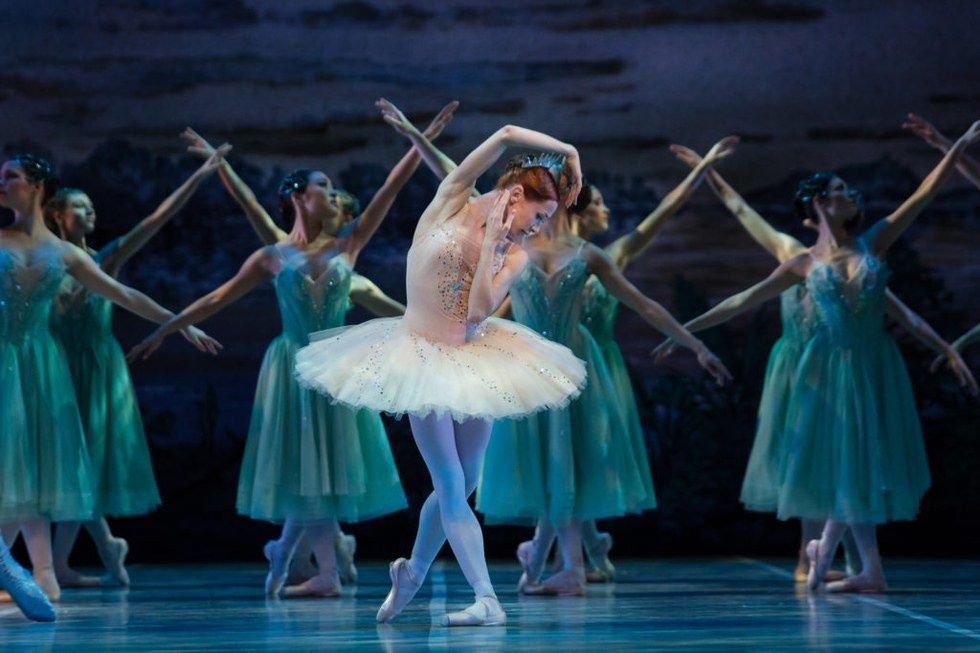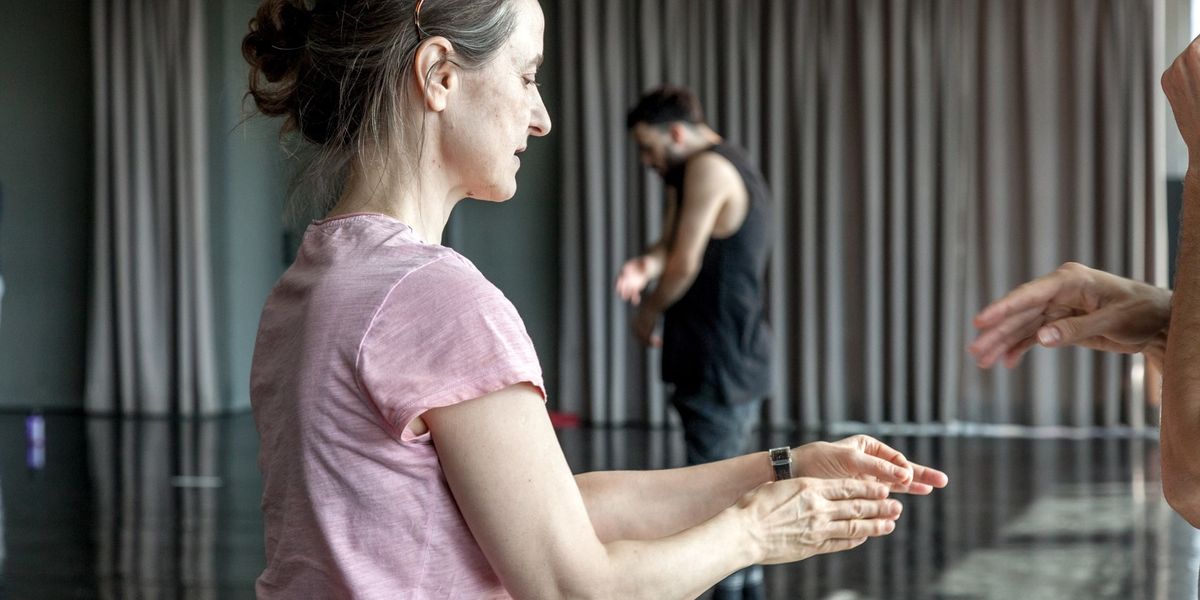Sasha Waltz on What Went Wrong at Staatsballett—And How They're Moving Forward
You could say that Sasha Waltz has had a rough few years. When she was appointed co-artistic director of Staatsballett Berlin in 2016, along with Johannes Öhman, former artistic director at Royal Swedish Ballet, it didn’t go so well. She was met with petitions and protests from the dancers, who argued that under the leadership of someone with minimal ballet experience the company would lose its classical heritage and technical excellence.
But she’s also had an arguably fruitful few years. She’s celebrated the 25th anniversary of her company, Sasha Waltz & Guests, for which she’s continued to create critically-acclaimed, highly collaborative work. The drama surrounding Staatsballett has died down significantly. And next year, when she joins Öhman at Staatsballett (his tenure began this year), she’ll be at the helm of two of Berlin’s greatest dance companies, creating new work for each company every other year on an alternating basis.
This week, Waltz’s Kreatur will have its U.S. premiere at the Brooklyn Academy of Music. For Waltz, it’s a particularly special tour stop: It’s part of BAM’s final Next Wave season programmed by outgoing executive producer Joseph V. Melillo, whom Waltz considers an influential collaborator and supporter.
We caught up with her about Kreatur and what she envisions for Staatsballett:
What Inspired Her Latest Work
As a starting point for Kreatur, Waltz took her cast to a former prison in Berlin, where an inmate gave them a tour. This experience sparked the initial questions the work would be grappling with, says Waltz, around freedom, fear, power structures and dominance.
The piece features costumes from fashion designer Iris Van Herpen, which Waltz says “create an aura around the body and transport us into a strange futuristic place where we look back to where we are as humans.” One special costume, made of metal spikes, represents “the threat we are encountering in the present.”
Waltz also collaborated with Soundwall Collective, a group of musicians known for their site-specific recordings, on an electronic soundscore she describes as an “acoustic photograph.”
Why She Took On the Staatsballett Job

Waltz wants to break down Staatsballett into a less hierarchical structure. Here, her Kreatur. Photo by Ute Zscharnt courtesy BAM
For Waltz, the opportunity to lead Staatsballett meant a chance to bring contemporary dance to a wider audience. “It’s the biggest institution for dance in Germany,” she says. “If we want to change older structures we have to enter them. I think it’s time for that. It will give another platform for contemporary dance so that contemporary is not only on the outside. It’s time to open up the repertory to other languages to see where we can take a new ballet to.”
The chance to break down the hierarchy of a traditional ballet company was also appealing: “I think it’s really important to work more in a collective, empowering every person to have their own ideas and to take full responsibility for what they’re doing and not waiting for someone to think for you,” she says.
She isn’t daunted by the prospect of running two companies at once, either. Waltz will mount revivals with Sasha Waltz & Guests during the years when she’s not making new work for them, and bring in outside choreographers as well as company dancers to keep the repertory growing.
Her Vision for Staatsballett Berlin

Waltz’s vision for the company includes both classical and contemporary rep. Here, Staatsballett dancer Iana Salenko in Sleeping Beauty. Photo by Yan Revazov, courtesy Staatsballett
Waltz envisions a company that performs both contemporary repertory, like the collaborative work she plans to create on the group, and classical ballets, including new reconstructions of full-length works. This plan is already being enacted: The company hired Alexei Ratmansky to reconstruct Marius Petipa’s original La Bayadère, which will premiere next month.
Staatsballett has hired a new crop of contemporary dancers, and Waltz says they may hire more depending on how much contemporary repertory they’ll be performing in a given year. They’ll also have what Waltz calls “hybrid” dancers who can do both classical and contemporary rep.
About All That Drama…
Waltz says that the Staatsballett dancers’ initial resistance to her leadership was rooted in miscommunication and fear. “After we met them and answered, like, 50 questions, there was a big change and an opening up,” she says. “Now it’s a different atmosphere, there’s a strong engagement in the company. There’s a lot of new dancers and they’re all willing to transform and be active in this practice.”
Since Öhman took over this summer, the dancers have seen standing ovations—something they hadn’t experienced for many years, according to Waltz—which has boosted morale significantly.
“We said we would draw a line and leave what happened behind,” she says. “I don’t want to bring it up all the time. We have to create something new together.”




